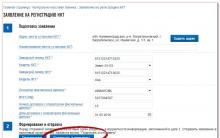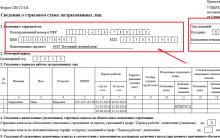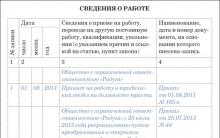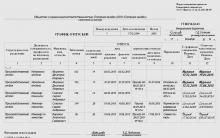Sometimes there are situations at the enterprise when employees are given money to perform various official assignments, and these funds are not passed through documents at the time of issue (except for a cash warrant). This may be a business trip of an employee, the purchase of office supplies or spare parts for a broken car. In order to confirm the spending of funds, it is necessary to draw up advance report (sample filling will be given below), according to all the rules. It is impossible to make mistakes when compiling it, since it is a document of strict accountability. Consider how to compose it correctly and what exactly to enter on paper.
Introduction
First, let's look at what, in general, this term represents. An expense report is a document whose main task is to confirm the expenditure of funds by an accountable employee. So the whole process looks like this:
- The company allocates money to an employee to perform a task.
- The employee purchases goods or pays for services for the issued cash, receiving a check.
- The check is handed over to the accounting department or to the responsible person, an advance report is filled out, which is subsequently taken into account in the accounting department.
Expense report allows you to control the allocation of company funds
The document is filled out by the accountant and the employee to whom the funds were allocated. The document has a special form approved by the State Statistics Committee of the Russian Federation No. 55 of 2001, it is called AO-1 and is a primary reporting document.
Attention:the execution of the document begins with an accountable person who enters basic information into it. Then it is transferred to the accountant, who makes the necessary details and additions to it, after which it is transferred to the head of the company for approval and signature.
After the paper is signed by the head, the accounting department closes the debt and conducts the arrival of inventory items, classifying it either as expenses or as a repayment of existing debts. It should be remembered that according to the legislation of the Russian Federation, the primary document does not have a standardized form, and the head of the company has the right to change it at his own discretion. But rules for filling out an advance report for budget companies, they are somewhat different; they can only use approved forms.
Compilation nuances
Consider some of the subtleties of compiling this document. So, it must be drawn up no later than three days after the employee enters the workplace or after the expiration of the period for which these funds were allocated.
Example:the employee received 3,000 rubles for a business trip. Upon returning from it, he goes to the workplace and within three days must submit a report to the accounting department. The following situation is also possible: the employee was given money on Monday, August 15, in order to purchase office supplies for the company. The period for which the funds were allocated is 2 days, that is, during this time the employee must make a purchase. Accordingly, the task must be completed before August 17 inclusive, and the reporting must be submitted before August 20 inclusive (3 days).
If the employee was supposed to submit reports before August 20, but fell ill and went on sick leave, then the norm of 3 days is transferred to the time the employee goes to work. For example, the sick leave took 7 days starting from August 18. On August 24, he goes to work, and he has three days to submit reports. If an employee delays the deadline, then material sanctions may be imposed on him.
How to fill out
Let's figure it out It is compiled in a unified form on the AO-1 form. The report must include the following information:
- The amount of funds issued to the employee.
- Name and position of the person to whom the funds are issued.
- The purpose for which the money is allocated.
- Data on the previous advance, if any.
- Requisites and accounting notes.

Standard Reporting Scheme
The main thing is that the document answers the following questions:
- Was there an overrun?
- Whether reports were submitted on time, whether all supporting documents were provided.
- Does the accountable sheet have debts to the company.
- Do I need to make a deduction from the salary to pay off the existing debt.
Attention:the list of persons to whom advances may be issued is approved by the head. Not every employee can receive money from the cash desk - if he is not accountable, then the issuance is prohibited.
The report consists of one double-sided sheet. The main, that is, the front part, is usually filled in by the employee, since it contains information that directly relates to his person and the data that he knows. The front side indicates the name of the organization, reporting number, full name of the employee and other data about him (position, personnel number), date of filling out the document and appointment. Also on the front side there is a plate in which data on previous advances are entered. On the reverse side, documents confirming the passage of the payment (cheques, receipts), as well as the total amount of money spent are indicated.
After the document has been completed by the employee, it is transferred to the accountant. He writes in it the appropriate amounts and accounts, as well as a note that the report has been checked and does not contain errors. The amount is always indicated in figures and in words, after which the accountant's signature is put with a transcript (full name, position), overrun and balance, various details, and so on. This document is compiled in a single copy, and it can be filled out both in traditional paper form and in electronic form. It should be understood that if errors are made in the preparation of the document and the head signs it without corrections, then tax officials may not take it into account and recognize the allocated amount as income, followed by additional personal income tax and other contributions. Therefore, be sure to check documents before signing them.
What to Consider
At the end of the article, we willIn the meantime, let's take a closer look at the points that need to be entered on paper.
- Name of the employee. As required by law, funds in the form of an advance can only be issued to those employees who officially work in the company on the basis of a civil or employment contract. Also, in addition to the full name, the position of the employee is indicated.
- It is mandatory to enter real data in the "Designation of advance" item, which must match the attached payment document.
- All necessary dates and amounts are entered in the primary item on expenses, which can be confirmed by checks and receipts. This will prove to the tax authorities that you really sent a person on a business trip, spent money, etc. Make sure that the dates in the primary and checks do not differ, otherwise it all could end badly.
Please note that reporting can be corrected if it has not yet been accounted for. If the accounting took place, but an error was found, then the document can be canceled (this is done by the head, since he approved it). It is recommended that you do not throw away or delete the incorrect form in order to provide it to the tax authorities if necessary, as proof that an error was made.

Standard filling pattern
What documents can confirm that the funds were actually spent in the specified amount? There are two options:
- Confirmation against sales receipts or waybills (that is, confirming the purchase).
- Proof of payment (cash receipt or card statement).
Attention:advance funds are issued to the employee on the basis of the submitted application. The reporting period is regulated by the company. She can set it at least 1 day, at least 50. But it’s better to stick to the classic 3 days.
It is also recommended to strictly prescribe the terms of repayment of debts on both sides. For example, if an employee spent more money than he was given, then he must receive an additional payment within a certain period. The same should be in the opposite situation - if the costs turned out to be less than the issued, then the employee must return the "change".
controversial points
Accountants often have questions about various nuances associated with its design. Let's look at a few controversial points regarding this document:
- The employee was given 20 thousand to buy two racks for the warehouse, but there were no goods at that price. He purchased two racks for 25,000, adding 5,000. In this case, an advance payment is made for the entire amount of the transaction (25 thousand), and the employee is compensated for his expenses on the card or through the cash desk (the employee needs to write an application and confirm it with checks).
- If an employee is engaged in bulk purchases, then an advance can be issued for several payments. For example, a technical director buys office supplies, lunches, equipment and goes on business trips 4 times a month. He does not have to take an advance before each action - he can receive a certain amount in advance, and then report on its spending and withdraw to zero, receiving compensation if it is exceeded, or, conversely, returning the funds to the cash desk of the enterprise. In this case, money is usually issued for a month, and statements are shown from the 1st to the 3rd.
- If an employee makes two or more applications for an advance, then he can report on them with one report, if the deadlines allow it. For example, on August 1, an employee was given 10 thousand for the purchase of a rack with a reporting period until August 7. On the third day, he bought a rack, and on the fifth, he went on a business trip until August 15, having received a second advance payment of 5,000 rubles for this. Accordingly, upon arrival, he draws up a report, which includes both the first payment and the second, breaking them down according to the purpose of the advance (household and travel needs).
- If the employee does not require reimbursement of the overspending, then it is necessary to sign a debt forgiveness document, after which the amount must be paid into non-operating income and displayed as other expenses. For example, the CEO who has a stake in the company quits. The company has recently been in a difficult situation, so the CEO bought some goods for his own, as a result of which a debt was formed. He leaves, but does not demand a refund so as not to finish off the company, since he has a stake in it. There is a debt forgiveness under the contract.
We have listed the main difficult situations that may arise when processing documents. We hope that now you understand how to fill out paperwork correctly and what mistakes should be avoided. According to this











How to issue a power of attorney to represent the interests of an LLC to an individual?
How to apply for an IP: step by step instructions
Form of power of attorney to receive goods or material assets
The deadline for registering an individual entrepreneur in the tax
Business plan for a law firm: an example with calculations legal support for a business